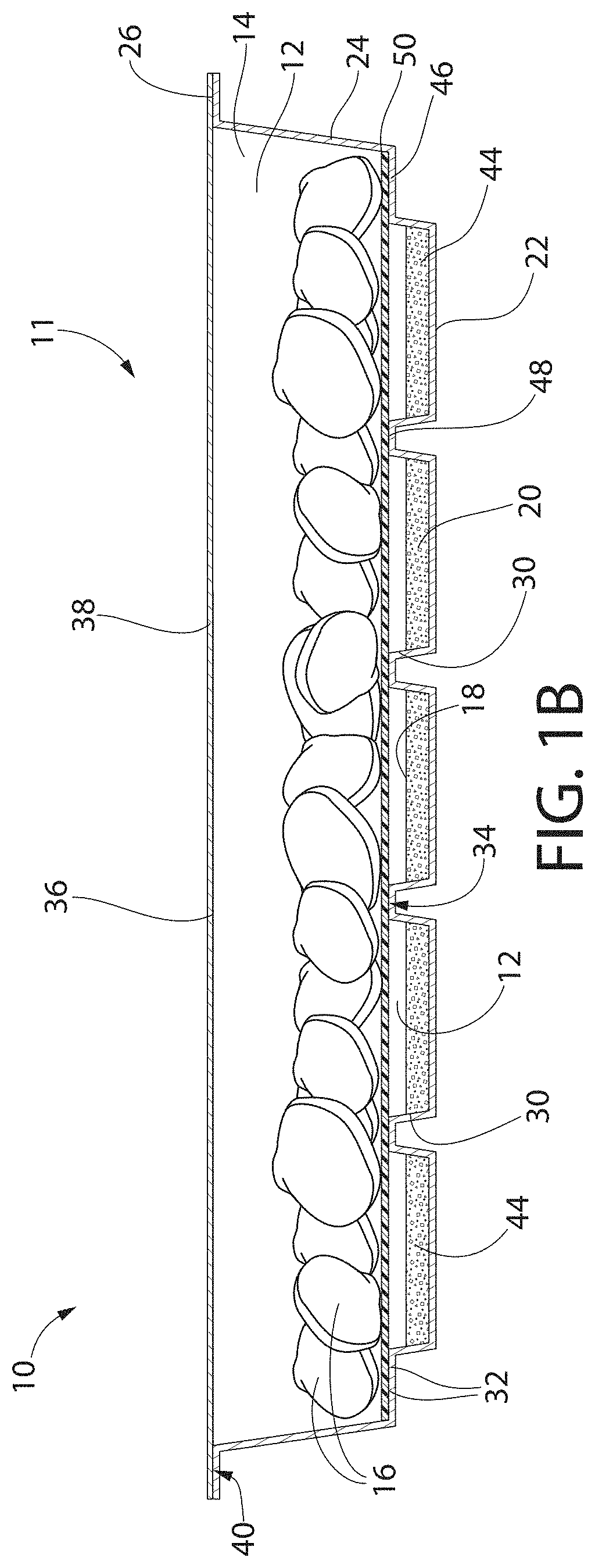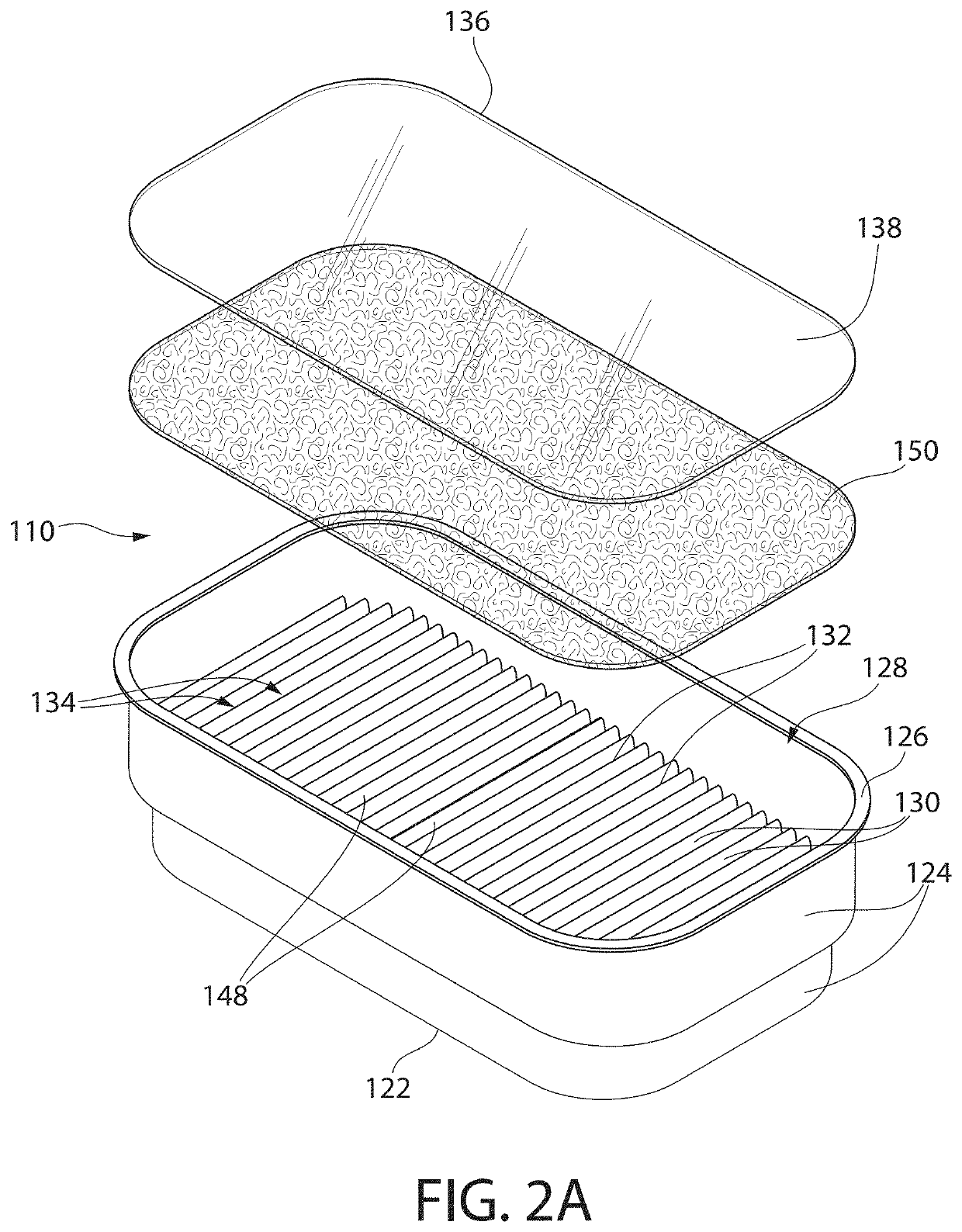Methods of packaging and preserving mollusks
a technology of mollusks and packaging, applied in the field of methods for packaging and preserving mollusks, can solve the problems of food degrading quickly, seafood is often discolored, unpleasant odor, and a significant percentage of them dying in less than a week
- Summary
- Abstract
- Description
- Claims
- Application Information
AI Technical Summary
Benefits of technology
Problems solved by technology
Method used
Image
Examples
example 1
ackaging Trial (Color and Smell)
[0117]On day 0, 6 ten pound trays of fresh 10 / 20 shucked scallops were received in the morning in an overnight shipment from a fishery. The scallops were stored in a Styrofoam cooler with flake ice or cold gel packs during shipment. Five pounds of scallops were taken out of each ten-pound tray and stored in 6 storage containers (each approximately 12.5″×10.5″×2″) generally similar to that shown in FIG. 1, with a lidding film sealed thereon to enclose the scallops. The sealed containers were placed into a cooler at 4° C. The remaining scallops were left in the plastic control tray (15.7″×11.5″×2.7″) with a snap on plastic lid also stored in refrigerated conditions.
[0118]On day 6, scallops from 3 sealed storage containers and the 3 corresponding control trays were sampled. No noticeable off odors were noted, however scallops from the control trays did have a slightly yellow color compared to those from the sealed storage container. Three scallops from e...
example 2
ackaging Trial (Bacteria Count)
[0120]Data from samples described in Example 1 were recorded, measuring bacteria, denoted in units of colony forming units per gram, or CFU / g. The following table shows the data, wherein “MCT Tray” refers to the sealed storage container described in Example 1.
TABLE 2AerobicBacteriaCOUNTSLOGcountCONTROLMCT TRAYCONTROLMCT TRAYDay 072.4572.451.860038391.86003839Day 6468682.6702458531.832508913Day 131675004005.2240148112.602059991
[0121]As shown in the above table and in the corresponding graph provided in FIG. 9, the MCT Tray surprisingly achieved over a 2.5 log CFU / g reduction in bacteria compared to the control at day 13 of storage.
example 3
ackaging Trial (Yeast and Mold Count)
[0122]Data from samples described in Example 1 were recorded, measuring yeast and mold. The following table shows the data.
TABLE 3Yeast andCOUNTSLOGmold countCONTROLMCT TRAYCONTROLMCT TRAYDay 047.1547.151.6734816971.673481697Day 6513.51.7075701760.544068044Day 1381350424.9103575571.62324929
[0123]As shown in the above table and in the corresponding graph provided in FIG. 10, the MCT tray surprisingly achieved over a 3.0 log CFU / g reduction in yeast and mold compared to the control.
PUM
 Login to View More
Login to View More Abstract
Description
Claims
Application Information
 Login to View More
Login to View More - R&D
- Intellectual Property
- Life Sciences
- Materials
- Tech Scout
- Unparalleled Data Quality
- Higher Quality Content
- 60% Fewer Hallucinations
Browse by: Latest US Patents, China's latest patents, Technical Efficacy Thesaurus, Application Domain, Technology Topic, Popular Technical Reports.
© 2025 PatSnap. All rights reserved.Legal|Privacy policy|Modern Slavery Act Transparency Statement|Sitemap|About US| Contact US: help@patsnap.com



